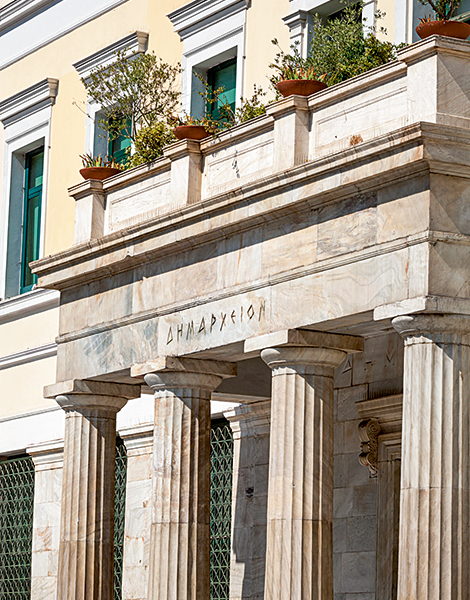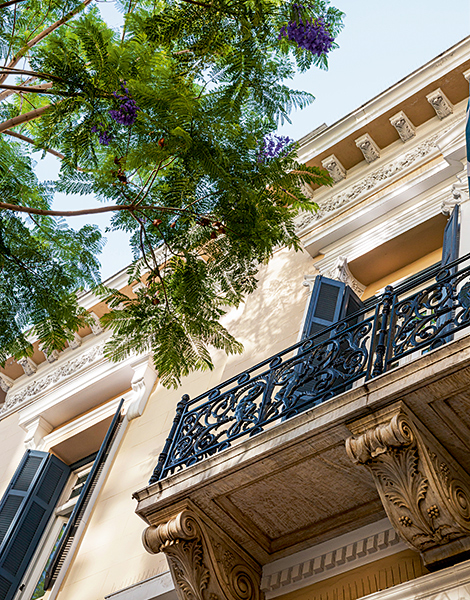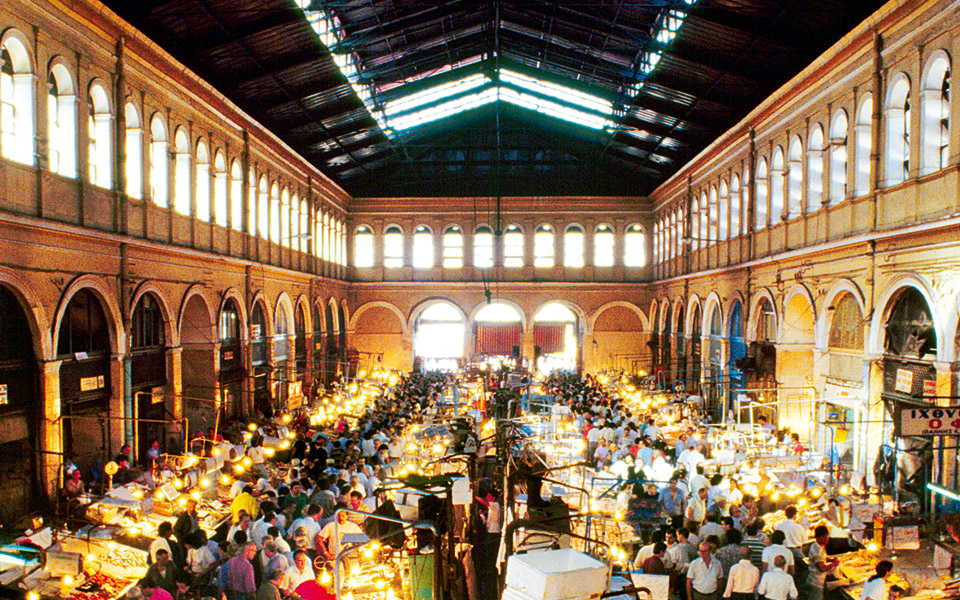If Athinas were a woman, she would be raucous, hard-working, neurotic and exotic, jovial and sly, perfumed with spices and herbs, flogging everything from fish and meat to kitchenware, construction materials and overalls. In some sections, the hard-worn street still reflects the passage of two centuries; in others, it has been given a facelift, with the renovations of several neoclassical buildings mocking in their grandeur the rough-and-tumble life of a neighborhood that did not suddenly appear like some miraculous offspring from Zeus’ head, but evolved through the day-to-life of the city’s residents.
Although its name, from the goddess Athena, denotes wisdom rather than commerce, Athinas Street has always been a key commercial hub, linking Omonia Square to City Hall, the Plaka, the Roman and Athenian Agoras and Monastiraki. Athinas earned its nickname as the ‘Street of Miracles’ because it once formed a bridge between the city’s gentrified, Western European quarters and its exotic, Oriental bazaars.
TRIVIA
• It was one of the first streets to be laid out in Athens, in 1834.
• In 1853, it was embellished with an ornate fountain, wooden signposts and lanterns.
• City Hall, originally two stories high, was built in 1874.
• Until the late 20th century, or thereabouts, it was the street with the greatest number of small, cheap hotels, which welcomed Greeks from the provinces, as well as immigrants from every corner of the world.

© Dionysis Kouris

© Dionysis Kouris

Although Athinas was never aristocratic, renowned architects like Panayis Kalkos and Ernst Ziller endowed the street with a number of stately buildings. Yet, the lifeblood of Athinas always was, and continues to be, the humble traders that preside over their shops there, carrying on in the footsteps of fathers and grandfathers who bequeathed them the family business.
The heart of this area beats in the Varvakeios Market, the Greek capital’s first covered municipal emporium. Built on a plot beside the Varvakeios High School, both were named after a wealthy benefactor who endowed several important projects at the time. In 1884, after a large fire razed all of the stalls of the older market, which dated from the Ottoman occupation, the new market was opened in 1886 and has operated ever since without interruption. No place for the faint-hearted (some visitors are put off by the sight of animal carcasses hanging on hooks), Athenians come here regularly to do their weekly shopping, often stopping for a bite to eat afterwards at one of the area’s many good tavernas. The eateries within the market itself are also famous for serving hangover-friendly food to Athenian party animals well into the wee hours. Despite the loss of much of its architectural legacy during the 20th century, Athinas still has one foot firmly planted in Ottoman-era Athens.
“ Athenians come here regularly to do their weekly shopping, often stopping for a bite to eat afterwards at one of the area’s many good tavernas. ”











